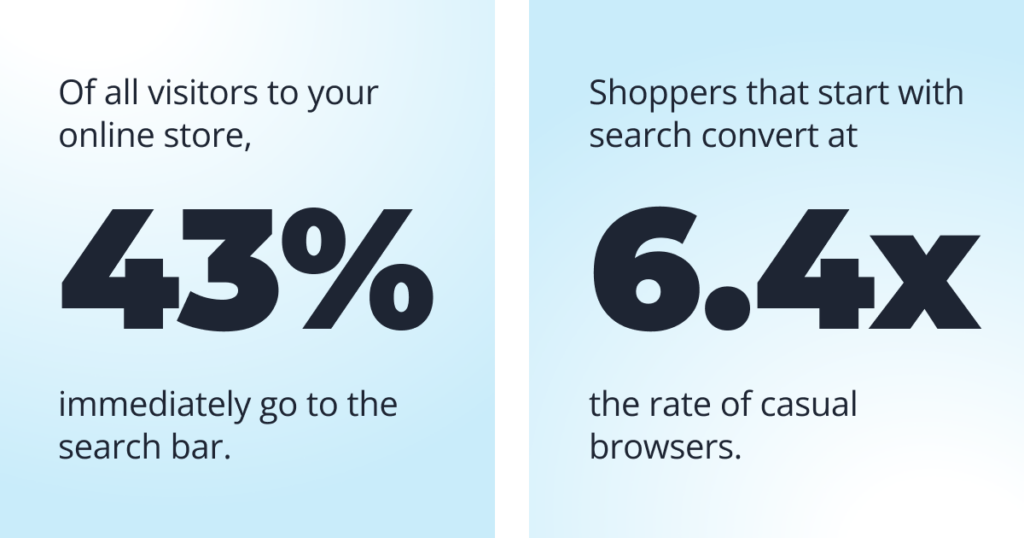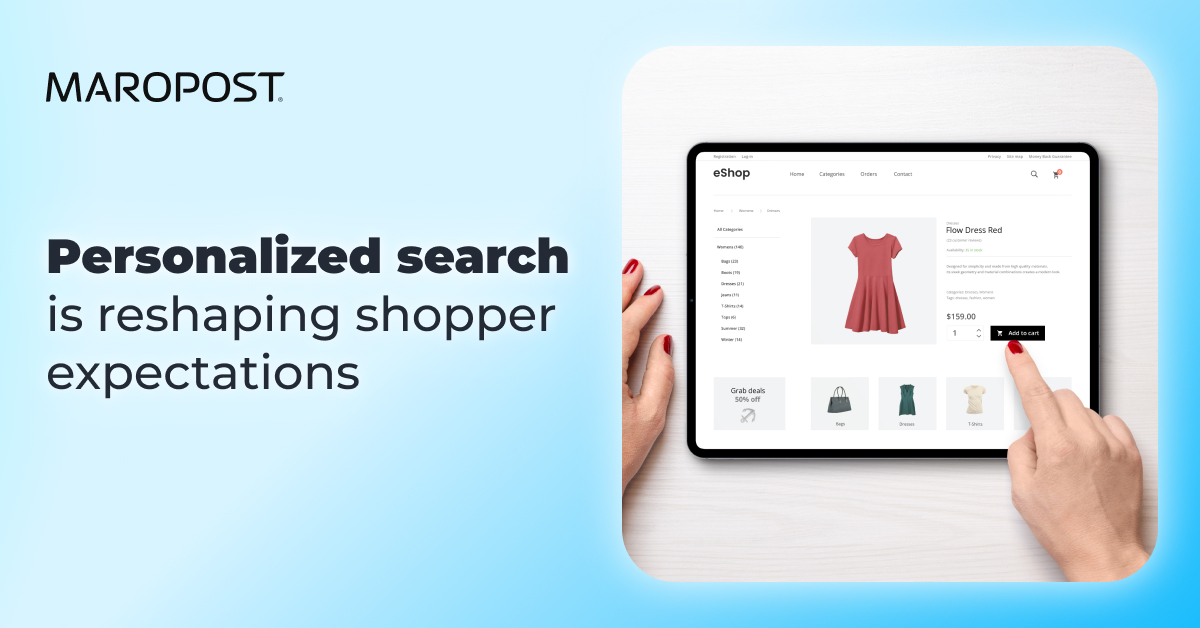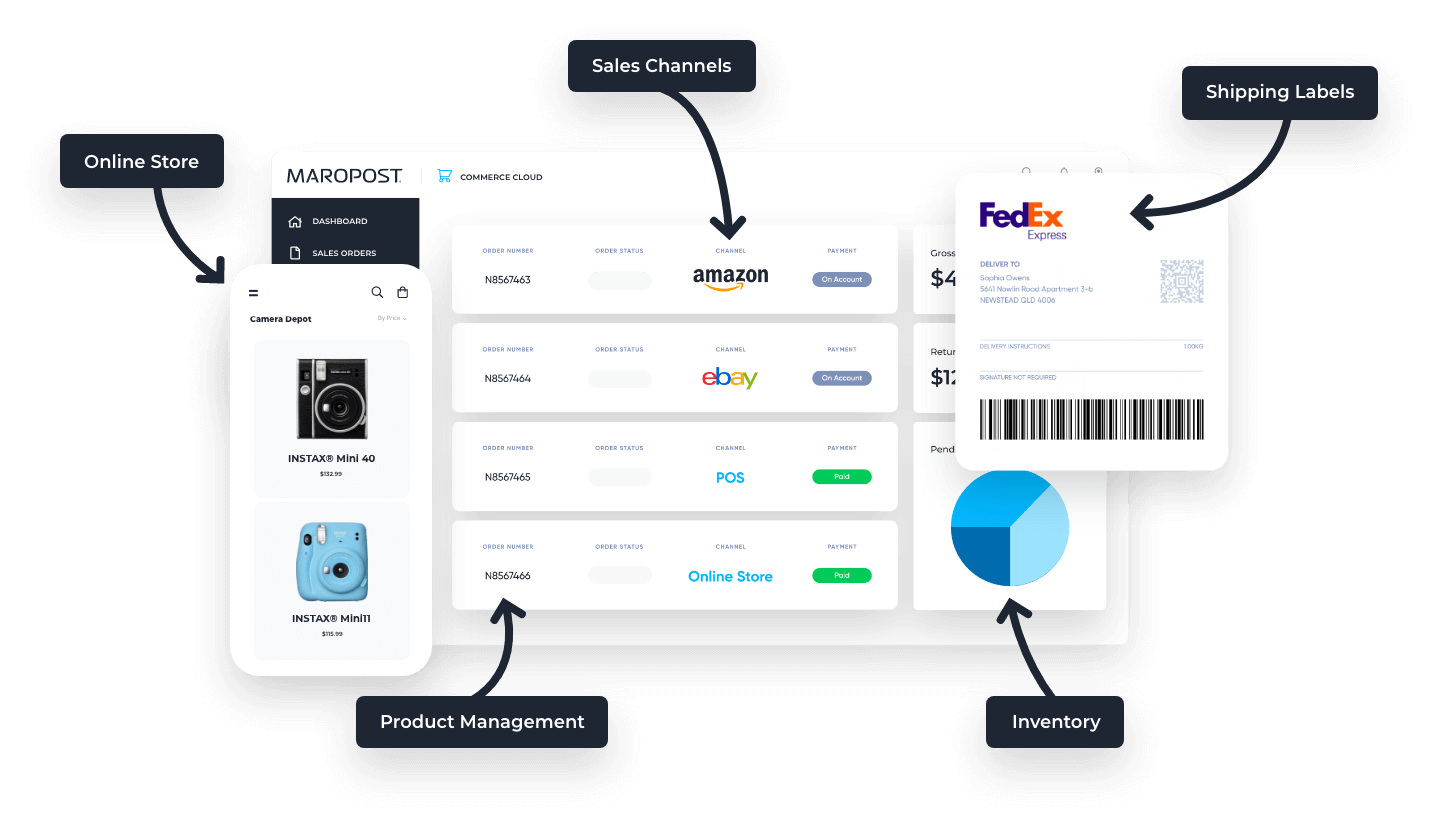The shoppers that are most likely to buy don’t just browse—they search with purpose. Over the past several years, personalized search experiences have quietly begun separating high-powered brands from underperforming ecommerce stores. In this article, we’ll talk about how advanced search capabilities are reshaping customer expectations and what top brands are doing to take advantage of the often-overlooked search opportunity.
Personalized search is now table stakes for growing brands
Back in the day, it was a revelation to be able to simply go to a website, type in what you’re looking for, eventually find it, and ultimately have it shipped to your door.
At that time, “personalized search” wasn’t even a thing. But now, personalized search—results tailored to each user’s unique preferences, interests, and past behaviors—has evolved from an impressive added feature to an essential component of ecommerce success.
In previous articles, we’ve talked about how 43% of online shoppers head straight for the search bar upon landing on a site, and those shoppers convert at 6.4x the rate of casual browsers. The quality of that search experience is a moment of truth—you need it to go off without a hitch. That first-touch experience needs to be seamless. The only way to do that is if your search tool understands, anticipates, and fulfills customer needs in real time.

Outdated ecommerce search is costing you customers
It’s true that to succeed with search, brands need a great search and merchandising tool. But the gap between insufficient and market-leading ecommerce search experiences isn’t just about features. It’s about how well a store can understand a customer’s intent and turn it into revenue.
Your search tool might have some impressive bells and whistles, but if it’s not helping shoppers find the things they’re going to buy, what’s the point? There are a few things that play into your search experience’s effectiveness as a conversion driver, and they explain why the ecommerce search gap is widening:
- Effective search depends on unified customer data. A recent study showed that only 14% of organizations have a 360-degree view of their customers. But the most powerful search and merchandising tools don’t operate in isolation. They draw from a full picture of the customer: past purchases, on-site behavior, preferences, and even support interactions. Without a whole unified commerce infrastructure to centralize this data, search will always be shallow and unable to personalize shoppers’ results in ways that convert reliably.
- Basic search engines still rely on keyword matching. That means unless a shopper types the exact words from your product catalog (no typos or regional vocabulary differences allowed), they’ll get irrelevant or even zero results. That means shoppers are not only getting recommended items they don’t want to buy, but they’re also getting a frustrating experience, tarnishing your brand’s reliability. Don’t expect those customers to return.
- Modern online product catalogs are complex. Many retailers have hundreds or thousands of SKUs across colorways, sizes, and variations. Without intelligent search, shoppers can’t find what you do have, even when it’s in stock and relevant. And that’s not even counting the backend work it takes to keep SKUs and collections accurate. With complex catalogs and a basic search tool, even small product data errors can make items effectively disappear.
This is where the divergence happens. Brands that intentionally create great search experiences are quietly capitalizing on their highest-intent shoppers. They’re guiding them seamlessly to relevant products, even when their queries are vague or seemingly unintelligible. If you’re sticking with outdated search tech, you’re frustrating your most valuable users—and you’re driving them to competitors who are easier to shop with.
And it’s important to remember that over time, this compounds. More conversions mean more money, of course. But they also mean more data, which improves personalization even further. A better experience builds loyalty with your brand, increasing the lifetime value of each customer. And frictionless discovery encourages last-second and bundle purchases, because you’re surfacing things that people really want.
That’s why retailers who treat search as the strategic driver it is are seeing more than just revenue increases. They’re creating better experiences, thus seeing stronger retention, which means compounding returns.
Brands that intentionally create great search experiences are quietly capitalizing on their highest-intent shoppers. They’re guiding them seamlessly to relevant products, even when their queries are vague or seemingly unintelligible. If you’re sticking with outdated search tech, you’re frustrating your most valuable users—and you’re driving them to competitors who are easier to shop with.
Here are some of the things you can expect from a search and merchandising tool that creates amazing customer experiences and that actually converts:
Natural language search that reshapes customer experience
It used to be that you had to be careful with your internet search queries to get what you want. But when Google rolled out a new language processing technology in 2019 to better understand the context of queries, the status quo of search began to shift. Now, search expectations have changed dramatically—and this extends to ecommerce search.
Natural language search bridges the gap between how customers think and how your product catalog is structured.
That means customers don’t expect the onus to be on them to clearly communicate what they want. You need to know what they mean. When a customer searches for “campng cofee thing,” you’d better bring up an Aeropress, or they’ll find someone who will.
Natural language search bridges the gap between how customers think and how your product catalog is structured. It helps shoppers find what they’re looking for—even when they don’t quite know how to ask for it—and it keeps you from losing sales.
Retailers who get this right make customers feel understood—and that moment of being seen goes a long way. It makes the shopping experience seamless, and it turns casual shoppers into loyal customers.
Product recommendations that supercharge personalization
Effective personalized search doesn’t stop at understanding intent—it goes beyond to understand what shoppers need and want even before they do—ultimately driving up your average order value. Your search tool should analyze your customers’ past shopping behaviors, current local context, and aggregate trends to feature items that make sense with their wants and needs.
Do this right, and you’ll create powerful moments of discovery. Say a customer purchased a pair of suede boots weeks ago, and now they’re purchasing a raincoat. Recommending a suede waterproofing spray just may make them realize that could be helpful in the upcoming weather—all the while getting the sense that your brand has their back instead of trying to pressure them into impulse purchases.
Understanding context and intent makes customers feel understood. If someone searches for “business travel backpack,” for example, they’re probably looking for something professional, durable, organized for electronics, and TSA-friendly. If your search shows them a classic Jansport backpack, they’re going to get the sense that you don’t really know what they need and you probably don’t even have it. Your search function should understand their needs implicitly and surface products that meet those needs without requiring them to specify every detail.
Merchandising tools that support your bottom line
Personalization is key, but smart merchandising is also about making personalization work for your business. Your online store should feature products that align with your goals, whether that’s moving seasonal inventory, increasing average order value, or promoting high-margin items—without sacrificing the trust you’re building through an excellent search experience.
The right tool can prioritize products dynamically based on performance, availability, and of course, customer relevance. If you’re trying to clear out a specific product category or get more sales on a new arrival, personalized search and merchandising can surface those products at key moments—when they make sense for the individual shopper.
The key is balancing personalization with control. While AI can optimize for timing and customer intent, merchandising teams still need the ability to prioritize key SKUs, highlight promotional items, and support broader brand campaigns. The result is an experience that feels tailored to customers but still works in service of your business goals.
The tangible ROI of a product recommendation engine for ecommerce
The impact of personalized search and product recommendations shows up in the numbers: higher conversion rates (6.4x that of casual browsers), lower cart abandonment, increased order values, and stronger customer lifetime value. On top of that, brands using advanced personalization report a $20 return for every dollar spent.
If you consider even small gains for a retailer with 100,000 monthly visitors, the revenue upside is significant. (Check out our Search Revenue Opportunity Calculator in this blog post to see how much revenue you’re leaving on the table.)
But more importantly, these gains aren’t one-off spikes—they grow over time. If your ecommerce engine learns from every interaction, recommendations get sharper, more relevant, and more likely to drive the next purchase.
Nowadays, product and price are easy to match. The true differentiator for leading ecommerce brands is how easy it is for their customers to find what they actually want.
Evaluating your current search experience
To determine where your ecommerce store falls on the personalization spectrum, ask yourself these questions:
- Can shoppers find products using natural variations in spelling or terminology?
- Does your search understand local context and intent, or does it just match keywords?
- Do product recommendations change based on a customer’s search behavior?
- Is your search equally effective on mobile devices?
- Do “frequently bought together” suggestions actually reflect those buying patterns?
- Do search results account for real time inventory status?
If you answered “no” to any of these, your search experience could be costing you significant revenue. All of these things are capabilities that are becoming standard in ecommerce, and they’re what customers expect. Take our quiz to learn more.
The good news is that closing the gap between basic and personalized search is more achievable than you might think. Implementing smart, AI-powered search and merchandising doesn’t have to require a huge IT team or an enterprise-sized budget. Many tools integrate easily with popular ecommerce platforms, making it easy to grow with your business.
The future of personalized search is unified
Effective personalized search doesn’t work in isolation. It’s part of a broader, unified commerce strategy. When your marketing, merchandising, ecommerce, and support systems all simultaneously create and make use of the same data, search becomes a reflection of everything your business knows about the customer.
In unified commerce, search draws from every touchpoint: what’s been promoted in an email campaign, what’s in stock and ready to ship locally, what a shopper asked about in a support chat last week, what they browsed during their last visit, what’s trending across similar customer segments—the list goes on. It can respond not just to a query, but to the full context of a shopper’s relationship with your brand—where they are, what they care about, and what they’re most likely to need next.
That’s the future of search: not smarter features in a silo, but a smarter business working together behind the scenes to create seamless, responsive, and deeply relevant shopping experiences. And brands who treat search as a core part of their unified commerce strategy aren’t just improving product discovery—they’re creating faster, more intuitive paths to purchase, building loyalty, and turning high-intent moments into long-term growth.
Personalized search isn’t just another feature to optimize. It’s a strategic lever—and for brands ready to compete at the next level, it’s one they just have to pull.
Want to learn more about how personalized search can boost your brand? Get a demo.
Need to chat about your mobile marketing strategy?
More than 10,000 marketers use Maropost to engage with their prospects and customers through emails, SMS, social media and more. We’re here to help you grow your business!
Chat Now

